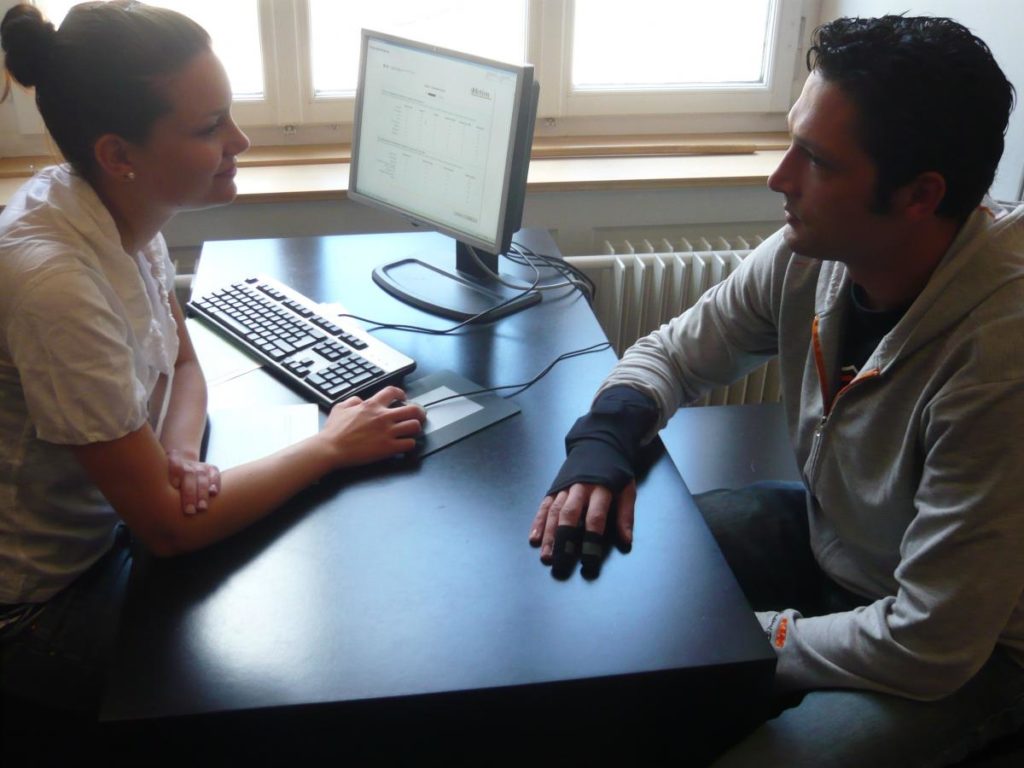eMotion analyses the experience of the museum-goer experimentally. The core of our interest is the museum architecture, the art objects, curatorial installation and how they effect and affect the behaviour of the visitors.

Gaining access to this complex realm of visitor reception in the museum required both innovative developments in research methods and technical apparatus. Architectural, visual and audio processes of data collection / presentation have been developed in parallel with field research methods in psychology and sociology, in a wholly complimentary fashion. Methods of visitor tracking, biometric measurements, empirical social science, data-sonification as well as the experiment itself as an intervention and installation.
Visitors who wanted to take part in the project, did receive a dataglove at the exhibition entrance that included several signalling and measurement sensors. The dataglove, allowed for the precise measurement of the path of each individual through the museum, their speed, their time spent in front of a picture/object. We also measured the heart rate and the skin conductance and their variablities. The immense amount of quantitative data generated was then validated by qualitative questionnaires, enabling the team to interpret the complex material adequately and thoroughly.
Via this methodological triangualtion and the development of new methods we hope to gain insight into the question of how the museum operates as a psycho-geographic field. Central to our study and enaction, are questions of art reception, art pedagogy, museum management – and modes of trans-disciplinary research and collaboration.
The results of this trans-disciplinary study could lead to a holistic understanding of the interaction of art work, curatorship and recipient – including the relation of the art object to the observer, as well as between the observer and his/her social context, speaking of his/her experience, expectation and other social and psychological variables.
The results are also relevant for curatorial studies, museum management, art pedagogy as well as art theorists and will provide them a deeper understanding of the museum context, art object and observer.

Findings for the visitor: In a step of double reflection, the visitor (who generated the data) had the possibility to observe their own museum engagement in the eMotion installation, moments from their course are played back through cartographic representation – providing self-insight into their specific modes of reception and implicit judgment. The scientifically generated, artistically rendered re-representation created an abstract visual and acoustic sphere through which the viewer can reflect their museum experience.
Detailed analyses of the various question which were analysed you will find in the publication section.
We are presenting our findings worldwide in conferences.
In the Media section you will find film material which gives a first insight into the project and the musem in which the research was conducted.
